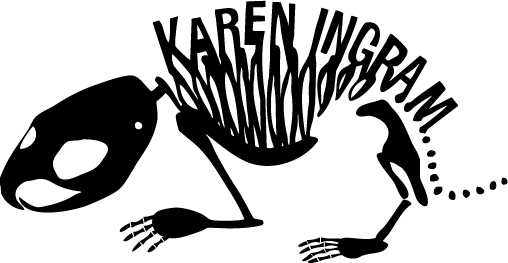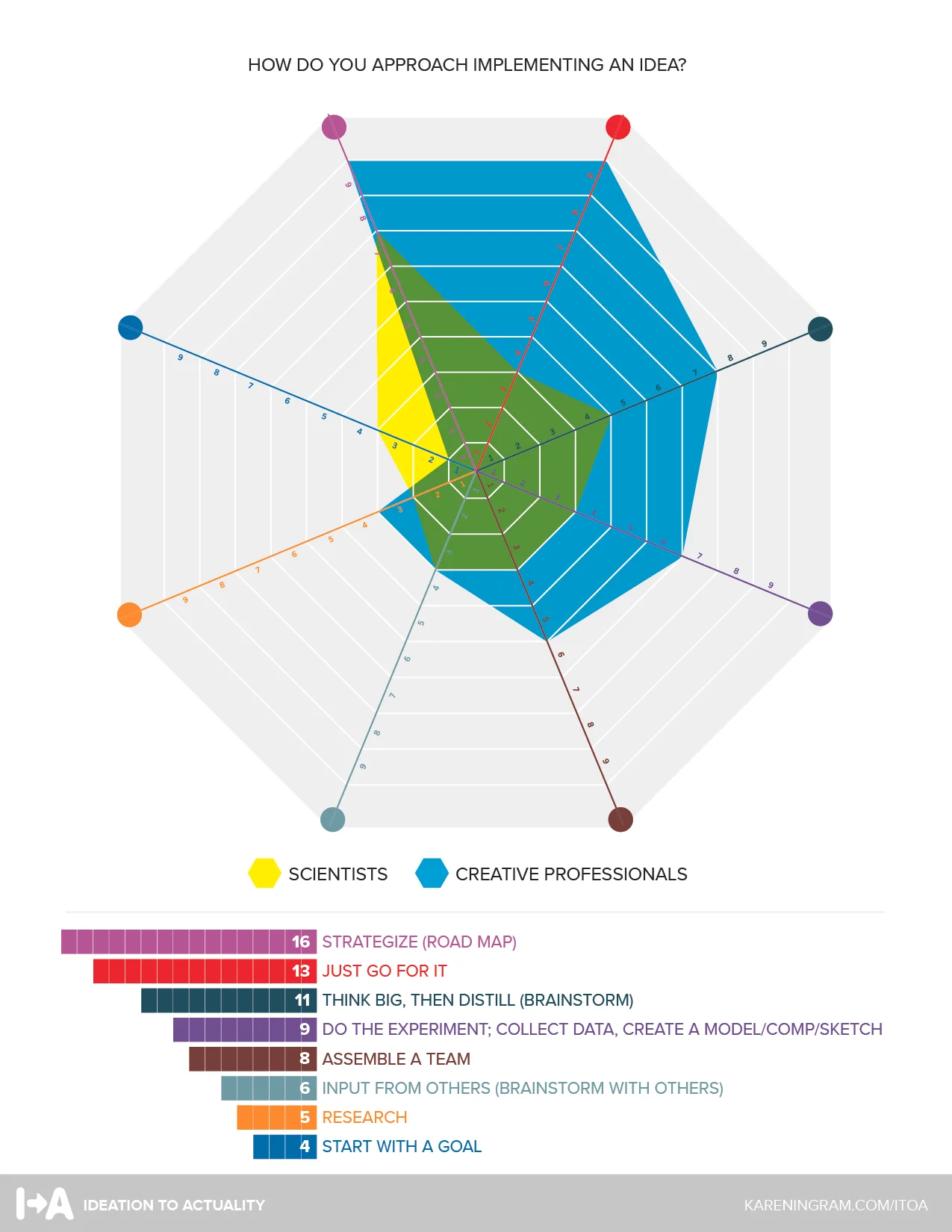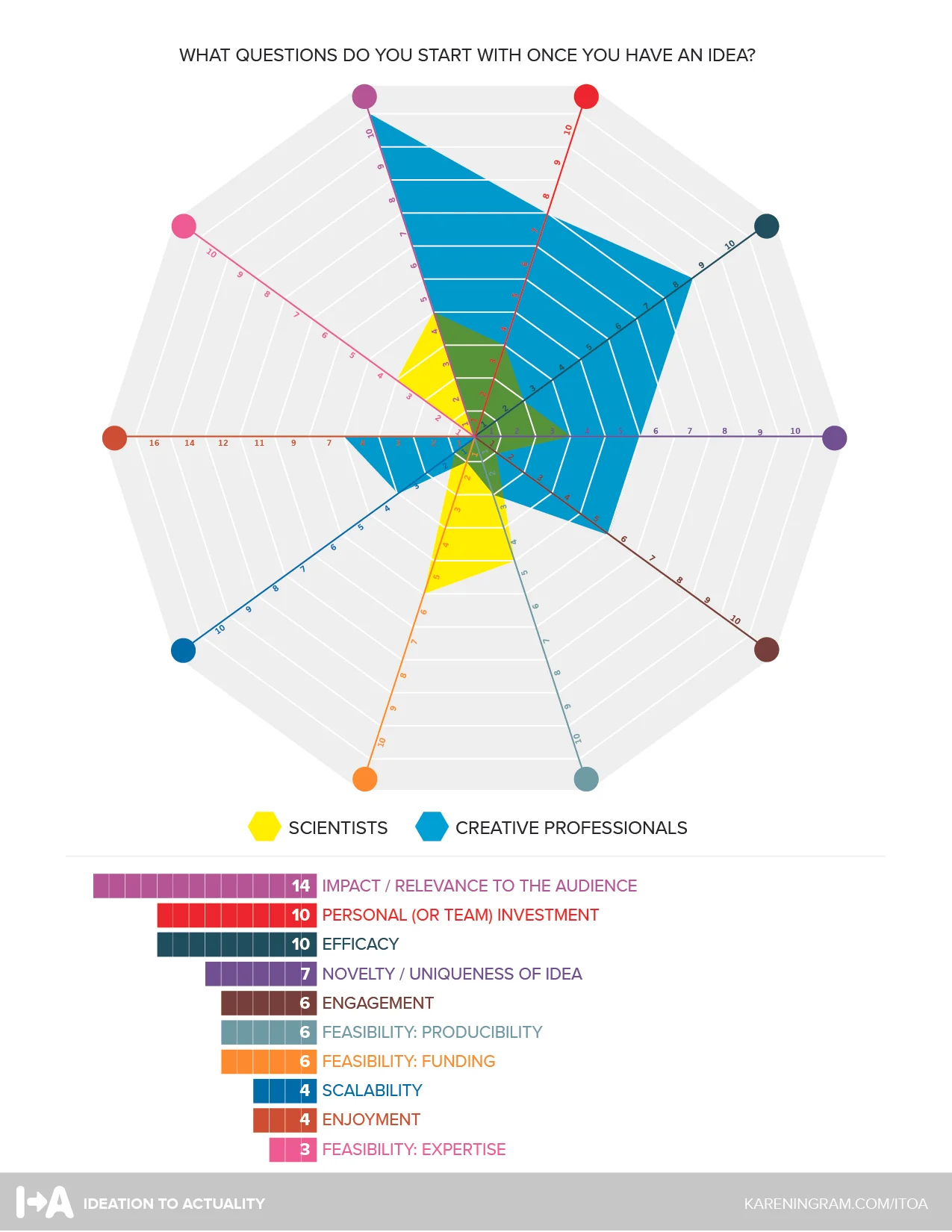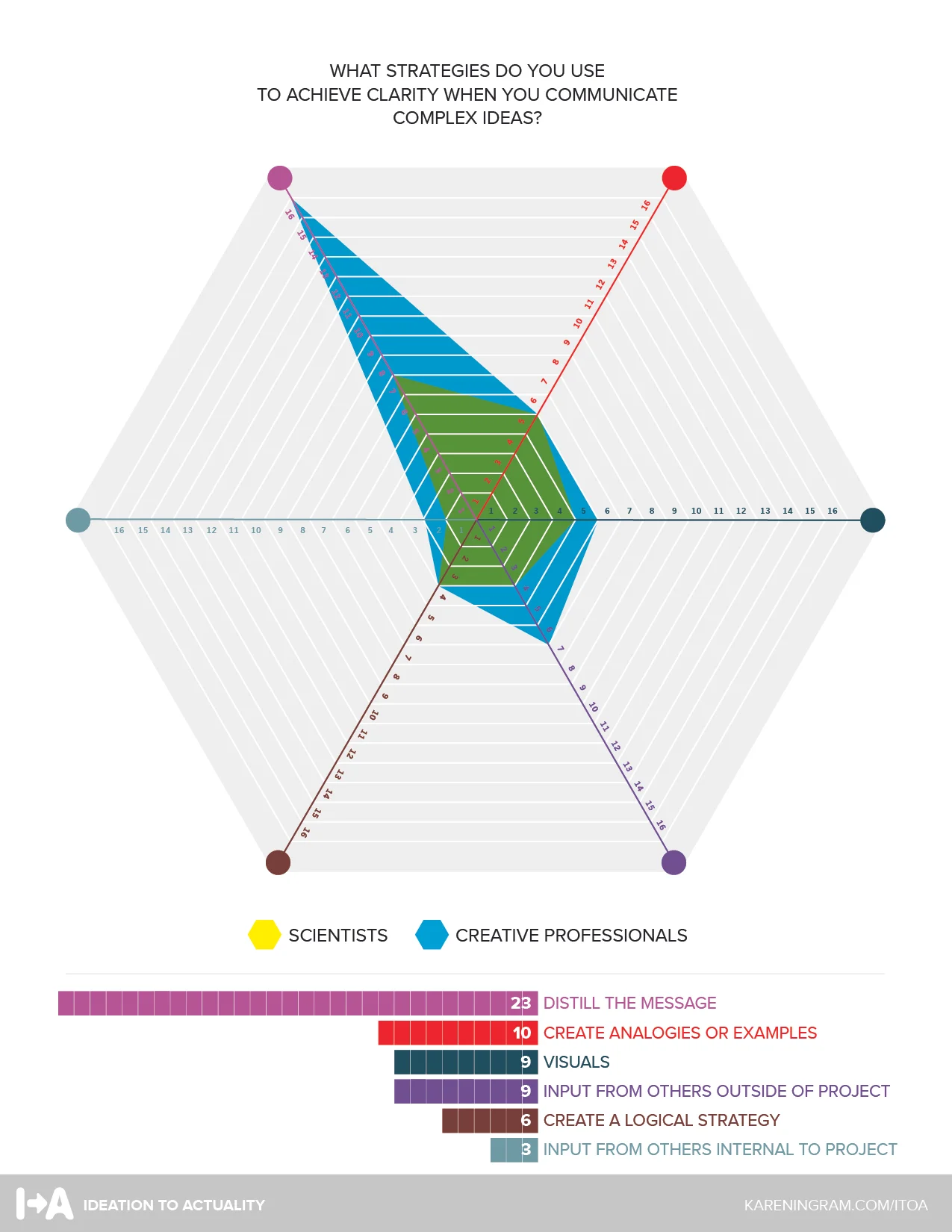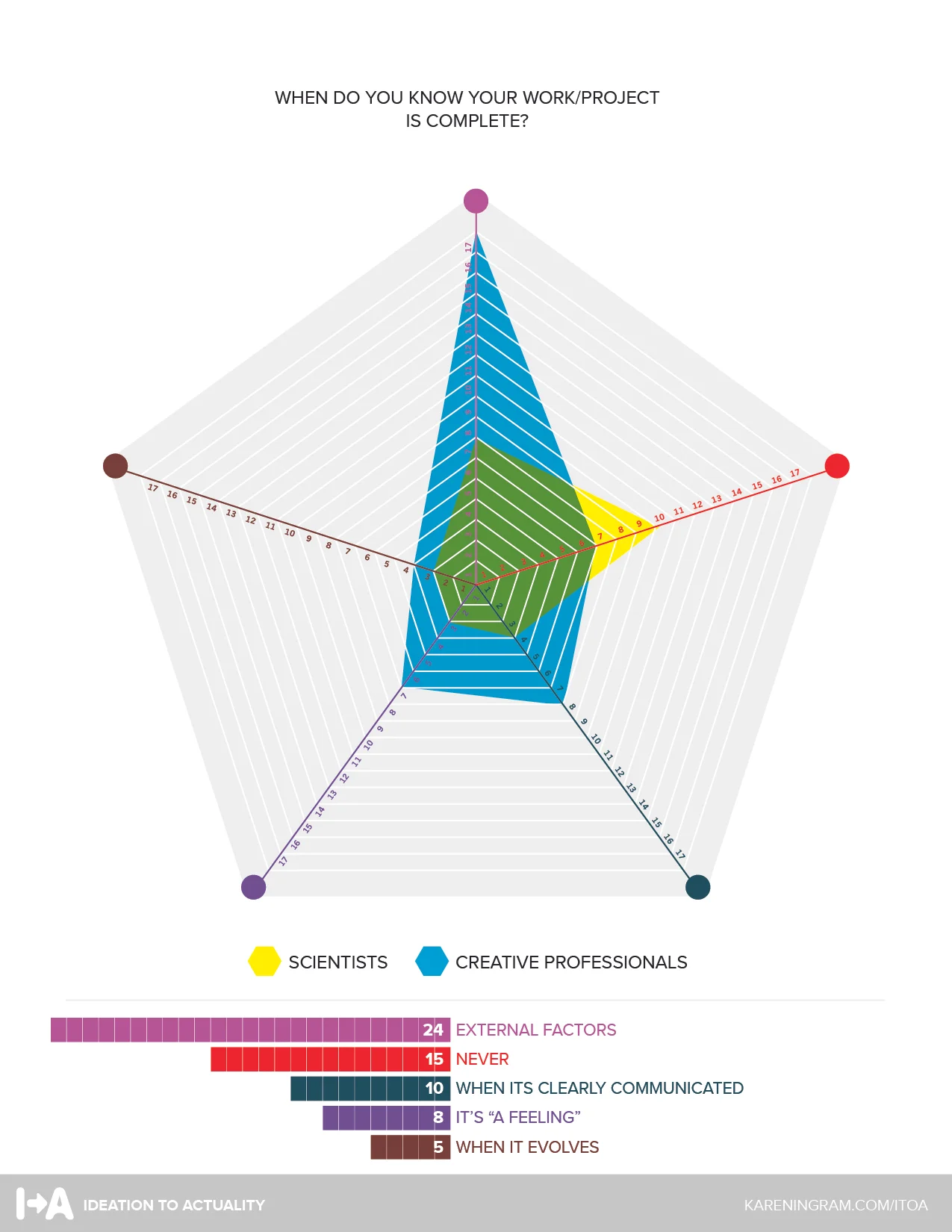From Ideation to Actuality: Identifying Connections Between Creative Professionals and Scientists
A survey of STEM and Creative Professionals
Read the full report
We conducted a volunteer research study that looked at the process by which professionals develop, implement and communicate their ideas in order to identify best practices. We asked survey participants to share their creative/intellectual process as well as how they communicated their ideas.
Overlapping Ideologies
Whether your an artist or a scientist, having a new idea is exciting and invigorating; the elation that comes with the desire to investigate and create, to dive deeper, to learn more, to get your hands wet. Good and bad, tried and untapped, failures and success. It's a complex web. Onion skins, rabbit holes, gateways… all allude to how enticing it can be to investigate an idea. How does one extract an idea and evolve it into a reality? How does one explain those ideas, and convey that excitement?
Over a matching club sandwiches in Dumbo, Karen (an artist) and Christine (a scientist) realized that they saw a lot of similarities in how they expressed ideas, but more importantly, they saw opportunities. They decided to explore it with a larger group.
Art is not just making the world a pretty place; wrapping up something in a tidy aesthetic. It is a complex way of thinking and approaching problems – very similar to science. Both disciplines require overlapping methods; coming up with a hypothesis, testing your message through tangible, expressive forms, be it visual or verbal, vetting it, perhaps re-visiting it, and so on.
We first asked the question; do scientists want to communicate outside of their field? If so, why? To quote some of our STEM responders from a preliminary survey:
"I want people other than my field peers to appreciate and be interested in the work I do."
"To expand the boundaries of the 'field,' to learn from others, to give back ideas."
"Now more than ever, we need to communicate and advocate for science."
"We owe it back to the community."
"Public science literacy."
How can Creative practices help STEM professionals communicate outside of their field? Our goal / objective with "From Ideation to Actuality" is to collect data that will assist us in designing curriculum and workshops. We will draw on creative processes and skills to help scientists better communicate research around topics such as environmental pollution, public health, and climate change, with a focus on women in STEM.
In making this actionable, there are plenty of hurdles that we hope to consider, some of which include:
Institutional and Regulatory Hurdles
What are the institutional hurdles that a creative professional might experience when working with a researcher in academia? Examples include training, certification, and regulatory hurdles like HIPAA, IRB, and PHI. Access to materials is another barrier. For example if a creative person wants to work with genetically engineered organisms, what regulatory hurdles exist if the researcher is not in the same location? What are best practices and recommendations for artist residencies in industry in academia, as it seems to be a growing trend?
Jargon and Practices
As creatives and scientists, we each have our own jargon and methods. How are they similar, how are they different? How novel are they? For example, the notion of "story" can be different; the story that the data tells, and the story that we may want to tell. How do you visualize that story? Using the same data, a scientist and artist may have very different views about how to process it and display it. In these differences are the places we can really expand our focus and learn from each other. The terms we use are different. Words like "sitelet" and "creative brief" were commonplace to Karen, but not to Christine. While methods for looking at and the collecting the data were Christine’s wheelhouse. However, creating a model, drawing a sketch, iterating -- these are all commonalities in both STEM and Creativity. How can we adapt ideas from one field to the next and build on each other’s strengths? How do we best communicate the beauty and wonder of science through words, figures, and art?
Funding
It's important to make sure there is a mutual benefit for both parties, and that the mentality isn’t that the artist will work for free and scientists get paid. Artists are used to self-funding projects, but this doesn’t mean the burden of funding should be put on them. When can third parties help with funding, and how can an art/sci teams pitch them? How can our findings expedite things for both parties to create funding/compensation opportunities?
(Projected) Benefits
To Scientists
• A expanded view to develop, process, visualize, and communicate their research
• Extended reach to a broader community
To Creatives
• Substantiated depictions via collaboration
• Access to an exciting, often closed off world of STEM research
• Learning about Ethical practices
In General
• Improves access, reduces barriers to entry
• Increases public understanding
• Evolves the tool kit to communicate with the public, media, and policy makers
Preliminary Survey
Initial Findings
We conducted an initial pilot survey to better understand the relationships between STEM and Creative professionals, and to develop this streamlined survey. Some of the results are shared here. We discovered lots of fascinating similarities, but also intriguing differences, for example, in answering "What do you do when you get stuck?" we received two charming contrarian answers; "...I always stop when I have a little bit left to write. That way, the next time I try to get started, there's always some easy low-hanging fruit waiting to be written.” from a Physics Postdoc. Conversely, a Copywriter, Director of Digital Creative claims when they get stuck, they “Eat the frog. Do the worst part first."
The Sample Group
We had 42 respondents for the Sample Survey
Gender
Male: 50%
Female: 50%
Area of Professional Expertise
STEM: 16
Creative: 23
Both: 1
Digital Strategists: 1
Researchers: 1
Age Ranges
20-29: 2
30-39: 13
40-49: 19
50-59: 2
60-69: 2
>70: 2
Sample Questions
Below is a sampling of the questions we asked:
How do you find inspiration for your work or ideas?
How do you approach implementing an idea?
What questions do you start with once you have an idea?
What strategies do you use to achieve clarity when you communicate complex ideas?
What do you do if you are stuck (i.e., writer’s block, fear of blank page, etc.)?
When do you know your work/project is complete?
Do you ever revisit something once its done?
Overlap Graphics
These graphics illustrate results from the some of the questions in the preliminary survey. Click on the graphic to get a closer look at the data.
Affiliations
The Research Team
Dr. Christine O’Connell
School of Journalism
Stony Brook University
About Christine –>
Karen Ingram
Independent creative professional
Synbio LEAP Fellow
Science Sandbox at New Lab Fellow
About Karen –>
